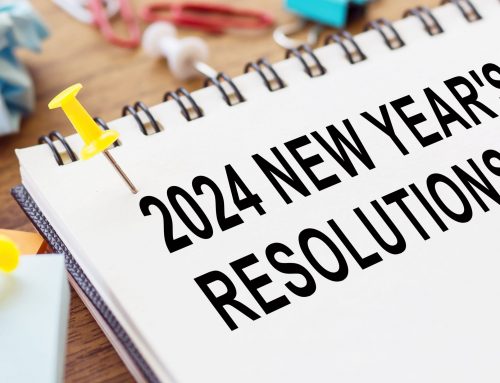The Whole School, Whole Community, Whole Child (WSWC) model outlines ways that schools should consider to educate the whole child. Some schools are fortunate enough to offer high quality physical education. This would be taught by a certified physical education teacher. However, many students are still not meeting daily physical activity guidelines. In addition, the school has been identified as an ideal venue for providing young people with additional opportunities throughout the day to be physically active.
Teachers Have Favorable Perceptions of Physical Activity in the Classroom!
Luckily, research shows us that teachers are supportive of physical activity in the classroom. They have consistently reported favorable perceptions of physical activity in their classroom! There are common facilitators of movement in the classroom such as:
- administrative support access to resources that support movement
- teacher belief that physical activity is valuable
- ease of implementation of movement activities
- confidence level of the teacher to implement physical activity in the classroom.
All these factors have shown to be important when considering teachers’ favorable perceptions of movement. It would be helpful to pursue in order to more successfully incorporate physical activity in the classroom!
There are Some Classroom Barriers
However, there also appear to be several barriers associated with incorporating movement in the classroom. The commonly reported barriers unsurprisingly mirror the facilitators and include a lack of:
- time
- administrative support
- resources
- space
- motivation
- implementation confidence
What Teachers Say
Teachers would benefit from training and resources to effectively incorporate movement into their classrooms. In other words, this is something they should consider requesting from administrators given the importance of administrator support. Increased training and additional resources would increase teacher confidence. Therefore, provide teachers with the resources they frequently request. Teachers report time and space as barriers to movement integration given their packed curricular requirements and small classroom spaces. While space is not something that can be easily increased, teachers can consider ways to set up their classrooms that facilitate more movement (i.e., seating arrangements and flexible seating). It can include easy to implement physical activity breaks in their daily lesson plans.
Overcoming Classroom Barriers
It’s given that teachers have consistently reported similar barriers to movement integration. Therefore, it is essential to consider some ways to overcome those classroom barriers! The following list of suggestions can help you as you take steps to embrace more movement in your classroom:
Deskside Activities
First, consider starting with desk-side activities. These should not require a lot of movement around the classroom. Though, they should still get students out of the seats and moving their bodies.
Consistent Management Routine
Secondly, make sure you have a consistent management routine for movement breaks. Some tips and tricks for this were provided in this article. However, teachers know their students best. Consider specific management tools that will work in you settings is the best strategy!
Specific Time of Day
Plan specific time during the day where movement works for you and your students. This includes regular movement during your daily schedule (beyond active transitions, etc.). Therefore, making it something you no longer have to worry about “working in” to the day.
Move with your Students!
Get moving with your students! Teachers are important role models for the young people in their classrooms. As a result, students are more likely to buy-in if their teachers are being active with them.
Embrace Chaos
Lastly, embrace the chaos! We know that movement can make students more successful in the classroom. So, if teachers are interested in educating the whole child, then they should consider ways to overcome classroom barriers. Therefore, increasing physical activity in their own classrooms.
References
Institute of Medicine. (2013). Educating the student body: Taking physical activity and physical education to school. The National Academic Press: Washington, DC.
Lewallen, T. C., Hunt, H. , Potts‐Datema, W. , Zaza, S. and Giles, W. (2015), The Whole School, Whole Community, Whole Child Model: A New Approach for Improving Educational Attainment and Healthy Development for Students. J School Health, 85: 729-739. doi:10.1111/josh.12310
McMullen, J.M., Martin, R., Jones, J., & Murtagh, E.M. (2016). Moving to learn Ireland – Classroom teachers’ experiences of movement integration. Teaching and Teacher Education, 60, 321-330.
Resources (cont.)
McMullen, J.M., Kulinna, P.H. & Cothran, D. (2014). Physical activity opportunities during the school day: Classroom teachers’ perceptions of using activity breaks in the classroom. Journal of Teaching in Physical Education, 33, 511-527.
Michael, R.D., Webster, C.A., Egan, C., Nilges, L., & Ali, B., Johnson, R., Carson, R.L. (2019). Facilitators and Barriers to Movement Integration in Elementary Classrooms: A Systematic Review. Research Quarterly for Exercise and Sport. 1-12. 10.1080/02701367.2019.1571675
National Physical Activity Plan Alliance (2018). The 2018 United States Report Card on Physical Activity for Children and Youth. Washington, DC: National Physical Activity Plan Alliance.

Dr. McMullen is an Associate Professor of Physical Education and Physical Activity Leadership. Her research focuses on whole-of-school physical activity promotion and she is particularly interested in teacher and student voice when it comes to promoting physical activity in schools. Her personal interests include being active, spending time with family and friends, and traveling to all corners of the world.






Leave A Comment